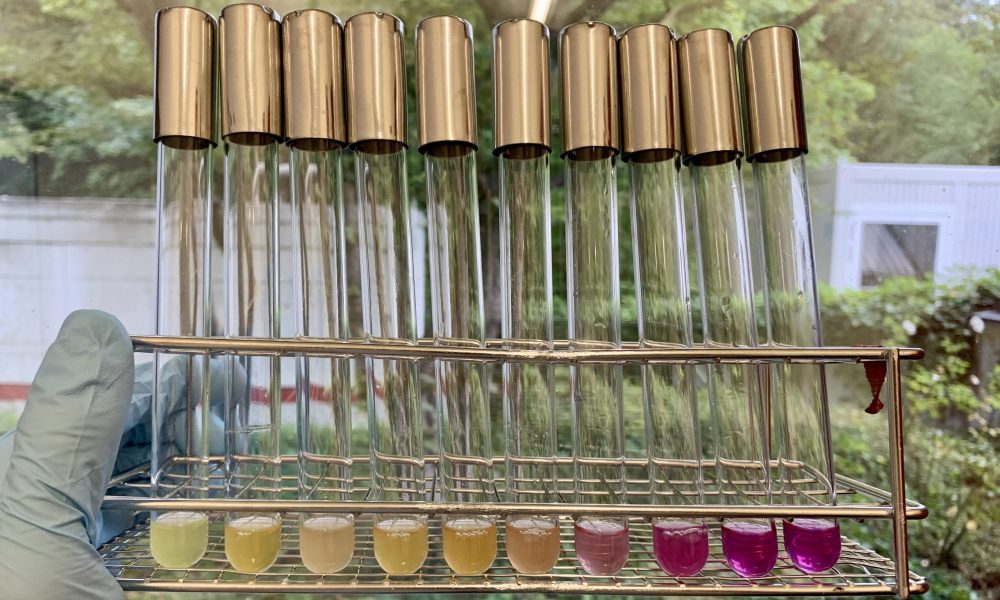
Read the latest Issue
Bacterial envelope integrity can be disrupted by drugs. The Typas Group studies the development of antimicrobial resistance and the effect that drugs have on microbiomes.

Antibiotic resistance is a major threat to humankind. One of the approaches to tackle bacterial infections in humans or animals is to disrupt the integrity of the bacterial envelope with antibiotics. This causes the bacterial cells to become leaky, lose essential cellular components and prevents them from performing biochemical reactions, ultimately leading to their death.
Scientists in the Typas Group study the development of antimicrobial resistance and the effects that commonly used drugs have on our microbiome – the microorganisms that live in and on our bodies. To quickly identify which drugs disrupt bacterial envelope integrity, Stefan Bassler uses a molecule called chlorophenyl red-β-D-galactopyranoside (CPRG).
CPRG is yellow and cannot enter bacteria that have an intact envelope. However, when the bacterial envelope has been damaged by the addition of a drug to the growth medium, CPRG can get inside the bacteria, where it is processed by a bacterial enzyme called beta-galactosidase. This reaction releases a chemical called chlorophenyl red which turns the growth medium red. This is visible in the picture: the deeper the red colour of the growth medium, the stronger is the disruptive effect of the drug on the bacterial envelope.
Looking for past print editions of EMBLetc.? Browse our archive, going back 20 years.
EMBLetc. archive